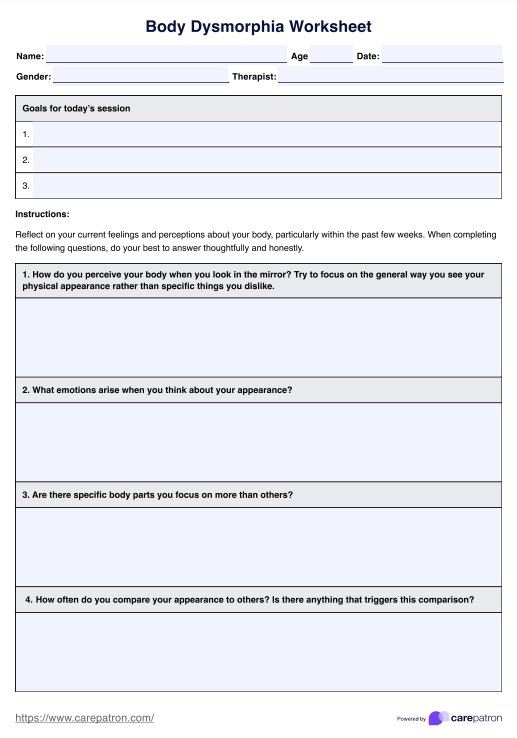Body Dysmorphia Worksheets are typically issued to clients with body dysmorphic disorder (BDD) during therapy sessions to facilitate self-reflection and discussion about body image concerns.

Body Dysmorphia Worksheet
Improve body functionality and image perception with our Body Dysmorphia Worksheet. Break negative patterns and enhance overall well-being.
Body Dysmorphia Worksheet Template
Commonly asked questions
Appearance concerns can develop due to a variety of factors, including societal pressures, media, genetics, past experiences, and other mental health conditions like anxiety or depression. BDD-related cognitions tend to develop into a vicious cycle where the person may feel their excessive worry over imagined flaws is uncontrollable.
Excessive concerns with one's appearance often contribute to negative self-esteem or talk and can impact social relationships and interactions. BDD-related behavior can also be detrimental to the person's mental and physical health, such as over-exercising and emotional distress. Untreated, body dysmorphic disorder may progress into an eating disorder.
EHR and practice management software
Get started for free
*No credit card required
Free
$0/usd
Unlimited clients
Telehealth
1GB of storage
Client portal text
Automated billing and online payments











